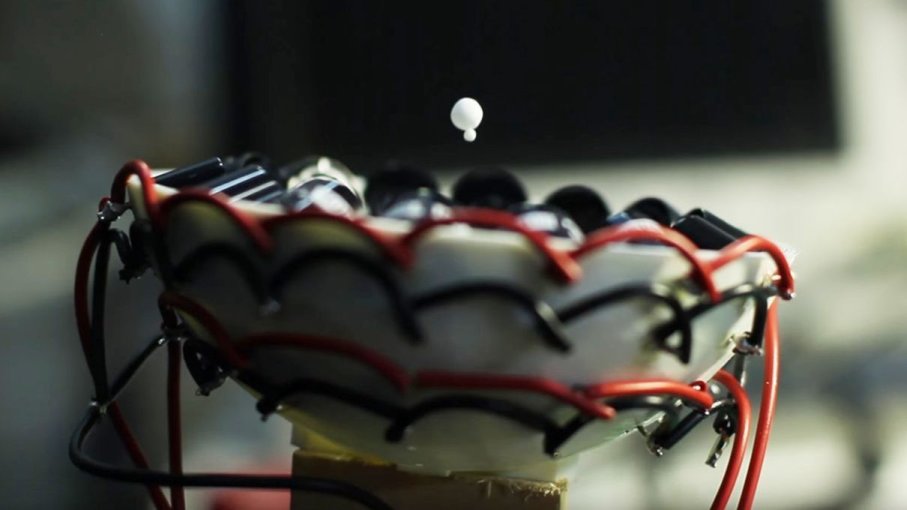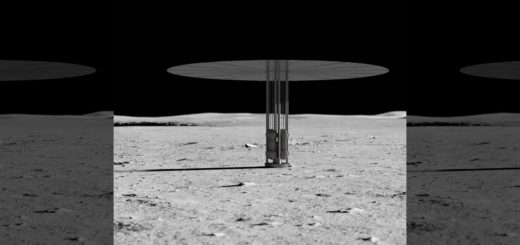3-D Printing Your Own Tractor Beam Levitation Device

Seen any Star Wars films? Then you know all about tractor beams — a sort of gadgetry that enables a spacecraft to grab a smaller ship and drag it along as if it were lashed with a cable, all by using some sort of invisible force that the scriptwriters don’t actually bother to explain.
Well, thanks to researchers at the U.K.’s University of Bristol, now you can build your own device that creates a novel sort of tractor beam — one that uses sound waves from one direction to trap, levitate and pull objects. All you need is access to a 3-D printer, so that you can print the parts based upon files they’ve posted online, and a little time for assembly. They’ve even provided a video on how on build the device:
There’s a catch, of course. Don’t plan on towing any spacecraft with this tractor beam, since it’s only capable of moving really small objects — ones the size of beads or small insects.
University of Bristol research assistant Asier Marzo, the lead author of an article on the project recently published in the journal Applied Physics Letters, says that the acoustic tractor beam relies on the fact that sound is a mechanical wave that carries momentum.
“For instance, if you put rice on a table with the radio playing very loud, the rice will move; or if you are in a concert, you can feel your chest vibrating,” he says via email. “If we use ultrasound, we can employ more powerful waves without them being painful for the human ears.”
He explains that when a pair of sound-emitting devices create a standing wave — that is, sequences of low-amplitude nodes and high-amplitude antinodes — it’s possible for solid particles to get trapped in the nodes. That’s a trick that scientists have been able to do for decades. But Marzo and colleagues have taken that idea to another level.
“Our systems have lots of tiny speakers all emitting with the same amplitude and frequency,” he says. “We carefully engineer their phases to make them create interference patterns with the shapes that we want.” Basically, what they’re creating is an acoustic hologram—a three-dimensional shape made from sound, which can push a solid object from loud regions to quieter ones.
Marzo and other researchers, in collaboration with a company called Ultrahaptics, used that concept to create the first-ever acoustic tractor beam, which they described in this 2015 article in the journal Nature.
“This was extremely cool, but was complex and expensive and so only we could run the experiments,” ultrasonics professor Bruce Drinkwater writes in an email. “So, this got us thinking about, could we strip this device down to its essentials and design a tractor beam that could be made for under £100? And, from the paper, you can see that we achieved this.” That amount is about $122.
Marzo also is excited about the idea of giving away the concept, so that other people can experiment with it. “I guess I will regret this when I am starving without work,” he says. “But I think that there is great value on making science accessible so that everyone can take part on it.”



 Creators of mankind
Creators of mankind Description of “Tall white aliens”
Description of “Tall white aliens” Where they came from?
Where they came from? About hostile civilizations
About hostile civilizations The war for the Earth
The war for the Earth “Tall white aliens” about eternal life
“Tall white aliens” about eternal life Video: “Nordic aliens”
Video: “Nordic aliens” Aliens
Aliens Alien encounters
Alien encounters The aliens base
The aliens base UFO
UFO Technology UFO
Technology UFO Underground civilization
Underground civilization Ancient alien artifacts
Ancient alien artifacts Military and UFO
Military and UFO Mysteries and hypotheses
Mysteries and hypotheses Scientific facts
Scientific facts


















